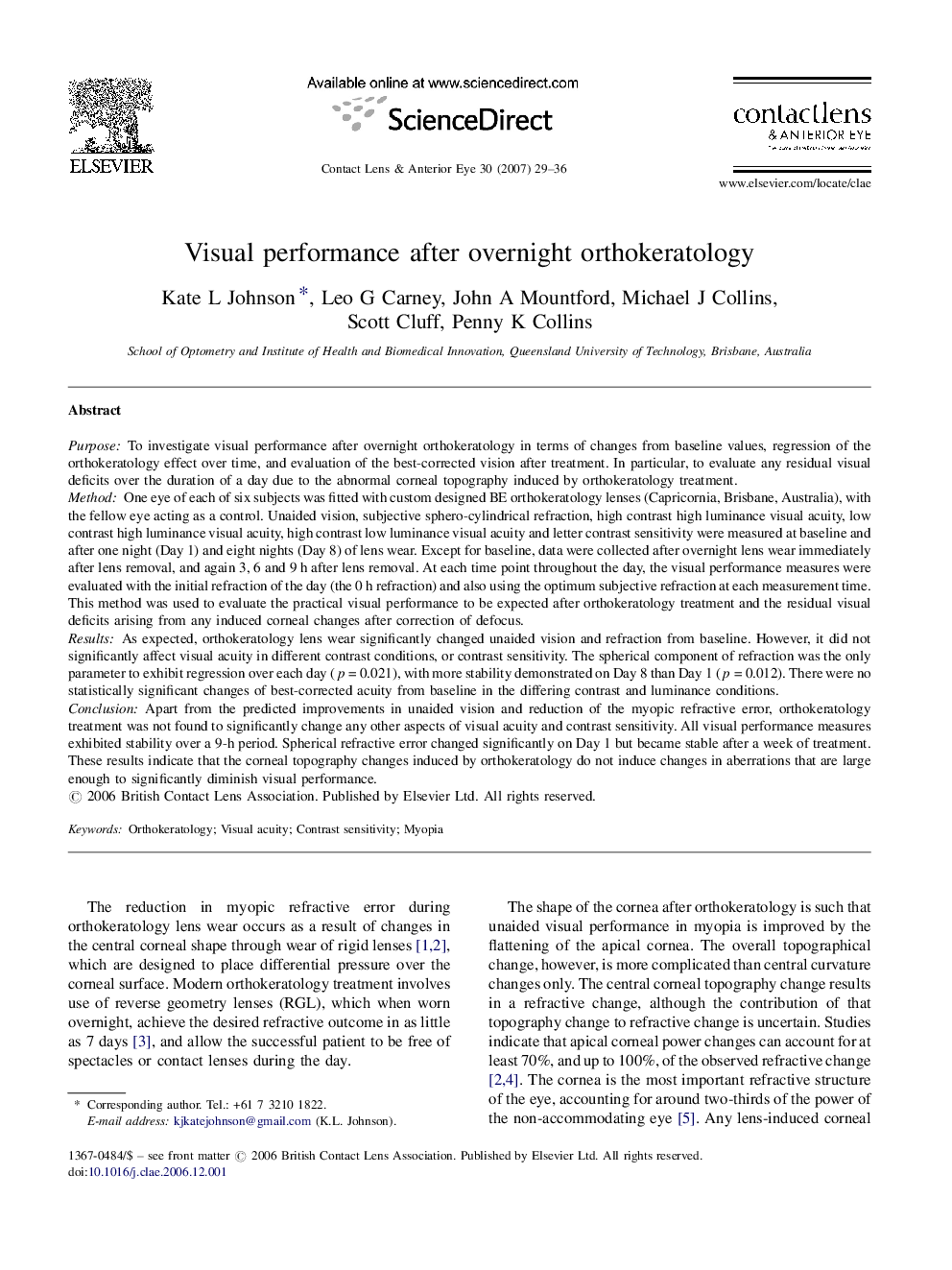| کد مقاله | کد نشریه | سال انتشار | مقاله انگلیسی | نسخه تمام متن |
|---|---|---|---|---|
| 2697202 | 1143888 | 2007 | 8 صفحه PDF | دانلود رایگان |

PurposeTo investigate visual performance after overnight orthokeratology in terms of changes from baseline values, regression of the orthokeratology effect over time, and evaluation of the best-corrected vision after treatment. In particular, to evaluate any residual visual deficits over the duration of a day due to the abnormal corneal topography induced by orthokeratology treatment.MethodOne eye of each of six subjects was fitted with custom designed BE orthokeratology lenses (Capricornia, Brisbane, Australia), with the fellow eye acting as a control. Unaided vision, subjective sphero-cylindrical refraction, high contrast high luminance visual acuity, low contrast high luminance visual acuity, high contrast low luminance visual acuity and letter contrast sensitivity were measured at baseline and after one night (Day 1) and eight nights (Day 8) of lens wear. Except for baseline, data were collected after overnight lens wear immediately after lens removal, and again 3, 6 and 9 h after lens removal. At each time point throughout the day, the visual performance measures were evaluated with the initial refraction of the day (the 0 h refraction) and also using the optimum subjective refraction at each measurement time. This method was used to evaluate the practical visual performance to be expected after orthokeratology treatment and the residual visual deficits arising from any induced corneal changes after correction of defocus.ResultsAs expected, orthokeratology lens wear significantly changed unaided vision and refraction from baseline. However, it did not significantly affect visual acuity in different contrast conditions, or contrast sensitivity. The spherical component of refraction was the only parameter to exhibit regression over each day (p = 0.021), with more stability demonstrated on Day 8 than Day 1 (p = 0.012). There were no statistically significant changes of best-corrected acuity from baseline in the differing contrast and luminance conditions.ConclusionApart from the predicted improvements in unaided vision and reduction of the myopic refractive error, orthokeratology treatment was not found to significantly change any other aspects of visual acuity and contrast sensitivity. All visual performance measures exhibited stability over a 9-h period. Spherical refractive error changed significantly on Day 1 but became stable after a week of treatment. These results indicate that the corneal topography changes induced by orthokeratology do not induce changes in aberrations that are large enough to significantly diminish visual performance.
Journal: Contact Lens and Anterior Eye - Volume 30, Issue 1, March 2007, Pages 29–36